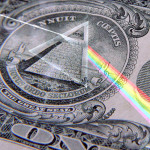A cash advance is an option for credit card holders to get straight cash which is then placed on their credit. Most people who take cash advance loans on their credit use a small percentage of their total credit limit. Credit card companies will usually have separate credit limits and cash advance limits.
 Some credit cards let you get a cash advance from an ATM. As long as the amount your asking for isn’t over your cash advance limit, you should be able to get a cash advance from an ATM. Sometimes you can even get money if it is above the limit and your account will just get flagged. These cases are handled the same way that a purchase over your credit limit is handled.
Some credit cards let you get a cash advance from an ATM. As long as the amount your asking for isn’t over your cash advance limit, you should be able to get a cash advance from an ATM. Sometimes you can even get money if it is above the limit and your account will just get flagged. These cases are handled the same way that a purchase over your credit limit is handled.
These days there aren’t that many situations where you can’t use a credit card, but for those few situations you can get cash instead of credit from your card. Alternatives to a cash advance would be to get money from your savings or checking account, or get a small private loan which almost definitely would be more expensive than a cash advance. If you’re in some sort of an emergency and need cash fast then a cash advance isn’t a bad idea.
The drawback of a cash advance is that they’re expensive. They should only be used if you don’t have any better alternatives to the cash advance. Cash advances come with finance charges from your credit card company and can also incur interest. Interest on cash advances can be very high, be sure you know what yours is before taking one out. If you must use a cash advance, only take the cash that you need and don’t take more. The less cash you take the less you’ll have to pay later.

Cash advances generally incur a fee (to replace the interchange fee normally charged to the merchant on a card transaction), although this is sometimes waived if the account is in credit. When made on a credit card, they are usually charged at a higher rate of interest than store purchases, and generally do not attract an interest-free period which is customarily given to cardholders who pay off their bill in full every month.